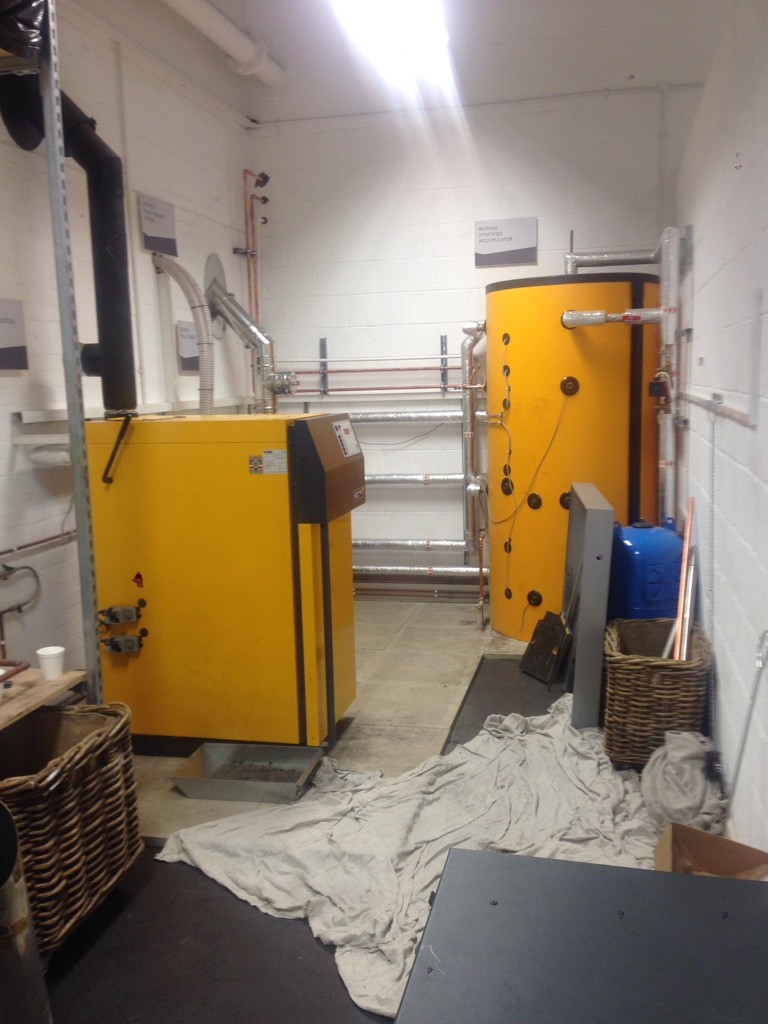- Messages
- 1,005
OK, A nice technical one for the Bank Holiday Weekend 
Buffer tanks - 2 port connection or 4 ?
Which is best 2 or 4 port, in What situation and why?
What factors e.g. does it depend upon the heating load types (e.g. underfloor / simple zone controlled rads)
So under what circumstances would a 2 port connection be best and when would 4 port connections be best.
Heat Pumps or Biomass Boilers?
Adding to that in each scenario which is the best way to send the call for heat to the Heat Source (HP or Biomass Boiler?
Finally when to use a loss loss header in preference to a buffer tank?
Example 1 Biomass boiler, long time to come on, like to run for a long time, long time for boiler to cool down - i.e. a large hysteresis, as such boiler manages buffer tank based on top and bottom temperatures and hysteresis on both. Heat load considers buffer as an inexhaustible supply of heat. Call for heat from rads / underfloor merely turns on circulation pump, so 90% of installations recommended as 4 port, though I have seen a few controlled this way though plumbed as 2 port, so with a proper back end management system means when boiler fired up that heat goes to heating circuits first.
Example 2 Ground Source Heat pump (non inverter) supplying mix of underfloor heating and rads, as all heat demands could be shut off manufacturers recommendation has been install buffer with a 2 port connection so that when heat load is less than production HP will heat up buffer tank and also meets the minimum flow requirements so doesn't get High pressure faults. - Call for heat from heating system
Example 3 Air Source Heat Pump (Inverter controlled) supplying mix of undefloor heating, fan coil and radiant panels, where load could vary from 600W to 10KW,
a) Supplier 1 recommended low loss header with call for heat from heating system
b) Supplier 2 recommends 100 Litre 4 port buffer tank with call for heat from heating system.
c) Supplier 3 recommends 100 Litre 4 port buffer tank with call for heat to HP from buffer tank with single sensor and 6°C hysteresis.
So question is Why the different recommendations re heat pumps, whether its GS or AS or Biomass - What's good and bad about each option?
Discussed it with various manufacturers and they simply maintain their position with no explanation as to why.
Buffer tanks - 2 port connection or 4 ?
Which is best 2 or 4 port, in What situation and why?
What factors e.g. does it depend upon the heating load types (e.g. underfloor / simple zone controlled rads)
So under what circumstances would a 2 port connection be best and when would 4 port connections be best.
Heat Pumps or Biomass Boilers?
Adding to that in each scenario which is the best way to send the call for heat to the Heat Source (HP or Biomass Boiler?
Finally when to use a loss loss header in preference to a buffer tank?
Example 1 Biomass boiler, long time to come on, like to run for a long time, long time for boiler to cool down - i.e. a large hysteresis, as such boiler manages buffer tank based on top and bottom temperatures and hysteresis on both. Heat load considers buffer as an inexhaustible supply of heat. Call for heat from rads / underfloor merely turns on circulation pump, so 90% of installations recommended as 4 port, though I have seen a few controlled this way though plumbed as 2 port, so with a proper back end management system means when boiler fired up that heat goes to heating circuits first.
Example 2 Ground Source Heat pump (non inverter) supplying mix of underfloor heating and rads, as all heat demands could be shut off manufacturers recommendation has been install buffer with a 2 port connection so that when heat load is less than production HP will heat up buffer tank and also meets the minimum flow requirements so doesn't get High pressure faults. - Call for heat from heating system
Example 3 Air Source Heat Pump (Inverter controlled) supplying mix of undefloor heating, fan coil and radiant panels, where load could vary from 600W to 10KW,
a) Supplier 1 recommended low loss header with call for heat from heating system
b) Supplier 2 recommends 100 Litre 4 port buffer tank with call for heat from heating system.
c) Supplier 3 recommends 100 Litre 4 port buffer tank with call for heat to HP from buffer tank with single sensor and 6°C hysteresis.
So question is Why the different recommendations re heat pumps, whether its GS or AS or Biomass - What's good and bad about each option?
Discussed it with various manufacturers and they simply maintain their position with no explanation as to why.




